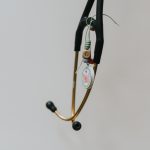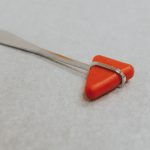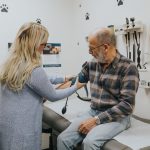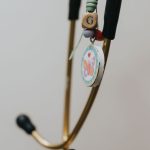Share
The methodology behind quality improvement
How Alberta’s emergency rooms are tackling pediatric pain
quality (kw-l-t): the degree of excellence of something.
improvement (/improovmnt): the action of improving or being improved.
“As physicians, unless you attended medical school in the last few years, you were never taught about quality improvement. You know what quality means, you know what improvement means, so you might figure you can just go out and do it. But if you know just a little bit of basic methodology, you’ll be much more likely to get the results you want.”
The methodology that Dr. Jennifer Thull-Freedman refers to is the process of identifying the problem you’re trying to improve, identifying measures so you can know whether change is leading to improvement, deciding on a change to make, and then repeating tests of change to until you get your desired outcome. This is known as the Model for Improvement1.
“It’s about understanding the role of data and measurement in driving improved care and outcomes,” she added.
Dr. Thull-Freedman is a pediatric emergency physician and the Medical Director of Quality and Safety at the Alberta Children’s Hospital (ACH)-a facility with multidisciplinary teams that know a thing or two about quality improvement. Alongside her colleague Dr. Antonia Stang, ACH’s Section Chief of Pediatric Emergency Medicine, and with support from various health care partners and leaders, they’ve put this methodology into practise for a number of quality improvement projects across Alberta.
Identifying the problem
Arguably one of the ACH emergency department’s (ED) largest quality improvement projects to date stemmed from talking to pediatric patients and their families. Dr. Thull-Freedman, Dr. Stang and their team discovered that approximately 18 per cent of children with an arm or leg injury said they felt their pain was not being managed effectively.
“When thinking about a quality improvement initiative, I think the value of getting patient and family input is something to put front and centre,” said Dr. Thull-Freedman. “An improvement project can be guided by having conversations with patients and families about what’s working for them and what isn’t; that could be a good starting point for knowing where to focus your efforts.”
The team started their work with a focus on children with limb injuries, since approximately 15 per cent of pediatric ED visits are for limb injuries. However, after talking with patients and families, they realized that no matter how severe an injury may be, children were often most worried about whether they would need a needle. So, they decided they would also try to reduce needle pain in the ED.
Identifying measures
To allow the project team to know whether they were accomplishing improvement aims, they created several measures, including: tracking the number of children under 12 years of age who received topical anesthetic before needle procedures; and for children under 17 years of age with fractures, tracking the number who received analgesic medication, the number who had a documented pain score and the overall median time to analgesia.
Deciding on a change
The team worked on making changes to reduce the pain and distress children experience when they visit the ED. The program, named Commitment to Comfort, sought to facilitate best practices by healthcare providers, while also promoting family engagement by raising their awareness of options for reducing pain and distress. For example, the team created posters inviting families to partner with staff in assessing pain and identifying management strategies. Patients were also given pain scales to help them describe their pain and assist staff in more accurately understanding each patient’s pain level. Comfort kits were also developed to provide children with fun sources of distraction during procedures.
“A lot of the drive for this project came from the interest of individual physicians, nurses and health team members in the emergency department, who wanted to provide the best possible care for patients,” said Dr. Stang. “It was also driven a lot by the support we had from leadership at all levels to do this kind of work.”
Repeat
Based on its initial success at ACH, the Commitment to Comfort program was introduced at four emergency departments in Calgary, followed by almost 50 rural and regional emergency departments across the province. Each site was asked to form their own project team, participate in monthly webinars, develop key driver diagrams and project aims, undertake PDSA tests of change, and audit charts to assess performance.
“We recruited several physicians and nurses to our project team who didn’t have much previous formal quality improvement experience, but were definitely keen to work on the project,” said Dr. Thull-Freedman. “They built a foundation of skills by learning the model for improvement, planning PDSA (Plan-Do-Study-Act) cycles and creating run charts to be able to detect whether there’s been a significant improvement or not. We had great interest and support from physicians and nursing colleagues, and tacking problems with a multidisciplinary approach really helped people achieve their aims.”
Results
One year after implementation in Alberta ED’s, the number of children receiving topical anesthetic prior to needles increased from 11 to 29 per cent. For children with fractures, the number with documented pain scores increased from 20 to 31 per cent, the number receiving analgesic medication increased from 33 to 38 per cent and the median minutes to analgesia decreased from 62 to 33.
“I think about really maximizing the intentions and the efforts that already exist and moving forward in a more efficient way,” noted Dr. Thull-Freedman. “I believe we can improve our overall care if we think about using basic quality improvement methods and working with other colleagues, disciplines and operations.”
View this one-page poster for a more in-depth look at the Commitment to Comfort quality improvement collaborative.
1Langley GL, Moen R, Nolan KM, Nolan TW, Norman CL, Provost LP. The Improvement Guide: A Practical Approach to Enhancing Organizational Performance (2nd edition). San Francisco: Jossey-Bass Publishers; 2009.




















Comments for this post are now closed. If you would like to share your feedback on this topic, please email support@cpsa.ca.